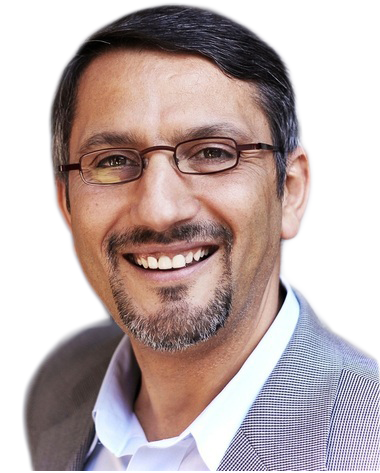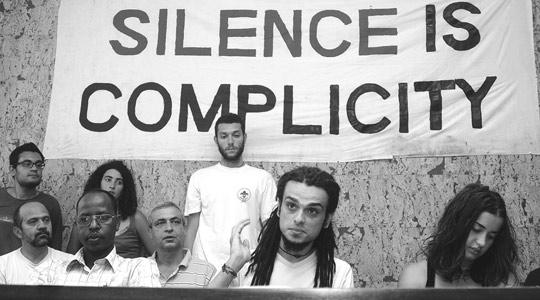“History will have to record that the greatest tragedy of this period of social transition was not the strident clamor of the bad people, but the appalling silence of the good people.” Martin Luther King’s words are as true today as the time they were uttered during the tumultuous years of the 1960s. I don’t claim to know how it feels to be an African American in America or the world today, but I can say that the level of silence and indifference to their suffering is endemic. As a Palestinian in America, I often try to understand and have empathy to those that have been made to live on the margins of society, are constantly demonized and blamed for their predicament. As if it is not enough that they are structurally marginalized, the institutional racist apparatus must absolve itself of any responsibility by blaming the victimized for its condition.
Let me speak the unvarnished truth and assert in clear terms that America is paradigmatically racist and intensely toward the “black” subject. Immediately, a critic will introject by stating that we have come a long way from the Jim Crow period and segregation. This is true but we have a long way ahead before we can claim equality, justice and fairness in America where skin color and racially marked zip codes do not dictate your future opportunities and life expectancy.
Racism in America is well structured and is formed at the DNA level of society. Here at Berkeley, the number one public university in America, one can get the delusional sense that this is the bastion of inclusivity and diversity and is on the cusp of “ending” racial discrimination. However, the reality reeks of silence, indifference and culpability in maintaining and extending America’s paradigmatic racism. How this manifests on a daily basis on campus and structurally is important.
Let’s start with enrollment and student diversity, where students of African descent (Native Americans and Latinos as well) are so few that you can hardly find any across many parts of the campus. I do understand that affirmative action is no longer part of the process but one would think that a university that is able to spend massive resources to identify the top athletes of African descent would be able to do the same across all the university’s departments. Lack of affirmative action did not impact the athletic programs and their ability to recruit but when it comes to developing the minds and future generations within the African-American community, then the institutional barriers are used as an excuse. What would have been the impact if the same energies spent to raise and barrow $335 million to renovate the football stadium would have been used to recruit more African American students and faculty? I am not anti-athletics but for sure our priorities are misplaced considering the consequences of such decisions.
Let’s raise some more questions: Does the of lack affirmative action prevent the university from favoring disadvantaged students within its geographical region? Do we have anything that prevents the university from expanding its admission or create open admission across the underserved and underprivileged communities? Does admission to UC Berkeley have to be confined to a self-constructed boundary of what the university is and the narrow scope of the classroom? Could the university conceive of the classroom being greater and larger than the boundary of the actual campus and be able to develop various partnerships to uplift whole communities?
The university’s problem-solving capacity is proportional and has a direct relationship to its vision! At present and in practice, the university’s vision is responsive to and is in total tune with corporate interests and, if I may say, the dominant economic, social and political elites, which are overwhelmingly white. It is important to point out in this discussion that the term white does not refer to a skin color but a state of mind. Community engagement is more than having relations with corporations or rich donors that influence the university’s priorities and shape the conceptualization of a market-driven diversity mindset. Campus diversity is not about expanding market opportunity and increased sales into a new and untapped customer base!
Moving from student population to examine tenured faculty, administration leadership and institutional responsiveness to the needs of African-American communities and students of color in general. Again, let’s not confuse slick public relations imagery around campus with solid numbers, program priorities and responsiveness. Take for example the two buildings that I spend most of my daily academic time in and witness daily the invisibility of institutional diversity. Factor out Ethnic Studies, Women Studies, EECS and two other departments and then examine the tenured faculty ranks, we get almost 85% white tenured faculty and upward of 70% of it being white men. The majority of faculty of color are not tenured and mostly fill the ranks of the lecturer structure. Alarmingly, the top ranks of the administration reflect a white country club membership despite the few administrators of color that are assigned the task of managing diversity or student affairs, which in itself is a type of exclusion by means of inclusion.
How does it feel when the only visible part of the African-American and Latino communities on the Berkeley campus is found among the janitorial services in buildings that purport to teach the highest ideals? Here, I am not denigrating the hard-working and extremely helpful group of people that put up with so much in silence but to point at the utter failure of a public institution in addressing structural racism that reproduces the society that daily causes a slow and methodical death. Here, white privilege and historical racism are taken for granted despite it reproducing the visible economic, social and political disparities.
How does it feel to be an African American or a student of color walking on campus, an injured soul suffering accumulative and generational traumas akin to a PTSD diagnosis after returning from war? You are expected to be happy, smiling and cheer “Go Bears” but never asked how you truly feel, if everyone in your family and community is alright and what help we can offer at this difficult time. “Go Bears” becomes empty if the institutional bear is constantly devouring all the resources and leaving bones for communities of color and departments that represent their concerns. Here, the institutional “bear” stokes a gladiator conflict among communities of color so as to compete for rapidly shrinking resources due to the narrowing of the university’s own vision while again blaming the “restless natives” for lack of plans and strategies to address the funding gaps.
How many department chairs, vice chancellors or the chancellor himself have sent a note or an email to express a basic human concern for the feelings of so many African Americans and students of color that are directly and indirectly feeling injured and find no one at the university actually gets it?
Administrative silence and indifference adds insult to injury for it gives the impression that everything is normal and nothing happened since everyone at the university is okay. I know for a fact that it is not okay for how much more can someone take when images and bodies are piling up? Yet normal is the order of the day with colleagues, department heads and administration and a happy student of color’s face plastered all over the campus as if we are living a real representation of the Truman Show. Silence adds to the pain because it conveys the un-importance of the collective you, African American and communities of color, that are not included when the term “we” on the campus is contemplated or imagined.
Is Oakland, Richmond, Pinole and Pittsburg part of the we on campus or is it the dangerous, the unknown and the realm of un-being that is unconnected to our daily lives? When we hear of death and injury to an African American or Latino some place in the country, do we think of our students’ feelings, colleagues’ emotions and the real need for expression of solidarity with the affected communities? More importantly, when the press kills and murders their characters in our collective consciousness, do we pick up the phone to complain and do we examine the subconscious that possibly is agreeable to what was already written? The critical question to be asked, if education is supposedly a transformative agent then why is it that we continue to reproduce the old and racist system at centers of higher education?


